Laminate is a well-known flooring that has long won the sympathy of people due to its strength, practicality, durability, comfort and low cost. A floor made of good material looks expensive and presentable. At the same time, practical characteristics also remain high. Installation of such a coating is simple and does not require special skills. Many people use laminate flooring for many years, mistakenly believing that the reason for this is only its quality. People are ready to spend a lot of time choosing a flooring material, leaving no attention to the preparation for laying it. In fact, the duration of operation and the preservation of an attractive appearance by 90% depend on the high-quality installation of the coating, where one of the main roles is played by the substrate under the laminate. Therefore, the correct choice of the substrate depends on how long and practical the floor will last.
Purpose of the substrate
The main functions of the underlay include a slight leveling of the floor, moisture absorption and sound insulation. The fact is that in its structure the laminate is a very capricious and poorly protected material. This is pressed wood dust, covered with cardboard on both sides. Andonly on the front side the material has an ornament covered with a film that protects the coating from moisture and abrasion. But if moisture penetrates between the seams of the laminate panels, the floor can “inflate” and creak when walking. By virtue of its purpose, it is a dense material that rests on the base of the floor and cannot independently absorb physical impact. It turns out that every step will be felt and "give" when walking. Moreover, even slight unevenness of the floor adversely affects the fastening of the panels, which, when exposed to an uneven floor, quickly wear out and cease to reliably perform their functions. The result is creaking, chipping along the edges of the panels, as the floor no longer forms a single unit, but breaks into sections of poorly fastened panels.
It is the substrate on the floor under the laminate that prevents its deformation due to small irregularities, does not allow moisture to penetrate from the base and performs small shock-absorbing and soundproofing functions, “softening” walking. From this it can be argued that it is absolutely necessary to ensure a long and comfortable life of the material, as well as to preserve its appearance.
Varieties and choice of substrates
There are several types of substrates for laminate flooring, which should be selected based on the following parameters:
- what kind of laminate will be installed;
- on what basis;
- how flat is the base;
- what are the indicators of humidity and temperature in the room.
Now let's take a closer look at which substrates under the laminateexist:
- Expanded polypropylene.
- Cork.
- Expanded polystyrene.
- Coniferous.
- Foil.
- Plastic film.
- Combined substrates.
Expanded polypropylene
This type of substrate is interesting for its absolute moisture resistance and the ability to effectively level the unevenness and thresholds of the floor. But polypropylene does not withstand physical pressure well and can be of different thicknesses if its bubbles burst as a result of a large load. Also, such a substrate will not be able to protect against noise.

Cork backing
This type of underlay will last a long time and deliver only pleasant sensations from use. The cork does not mold or rot, perfectly absorbs the load and is absolutely environmentally friendly. But the disadvantages include its high price and poor moisture resistance. However, here the manufacturers did not lose their heads and offered their customers a rubber cork substrate or bituminous impregnation for rooms with high humidity. But still, you should not joke with humidity, and experts advise putting a plastic film on the base of the floor before laying cork under the laminate under the laminate.

It should also be noted that cork is very demanding on an absolutely flat surface. Under heavy and constant loads (for example, under the pressure of furniture), in places with small gaps, the coating will simply swell.
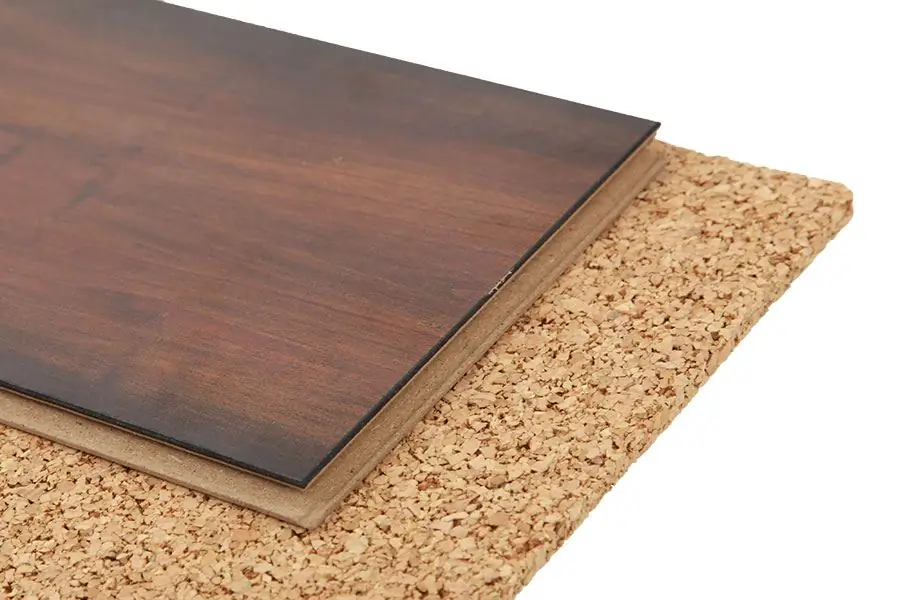
Styrofoam
This substrate is the most common on the modern market of materials for construction and repair, as it is produced by many domestic manufacturers. The advantages of extruded polystyrene foam include durability, high thermal insulation, moisture resistance and the ability to easily carry heavy loads. But he is not able to level the base of the floor at least a little, therefore it is used exclusively on a perfectly flat surface. Also a serious disadvantage of polystyrene foam is its high flammability. In the event of a fire, the fire will spread through this material with lightning speed. And the valuable properties of expanded polystyrene will last no more than 7 years. It turns out that such material will not be suitable for a durable and safe floor service.
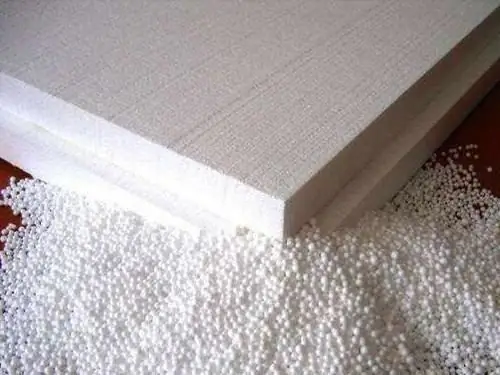
Coniferous backing
It is a pressed wood glued together with natural resins contained in the needles. It is produced in the form of slabs and is laid accordingly without any additional devices and adhesives. Perfectly passes air and does not contain toxins. The advantages of such a substrate also include excellent sound insulation and vibration damping when walking. Also, the needles are endowed with the ability to retain heat as much as possible and not let the cold in from the base of the floor, and therefore such a warm substrate for laminate flooring is widely used in the northern regions. The plasticity of softwood was also noticed by manufacturers, which began to be used to even out irregularities, sometimes even significant ones.
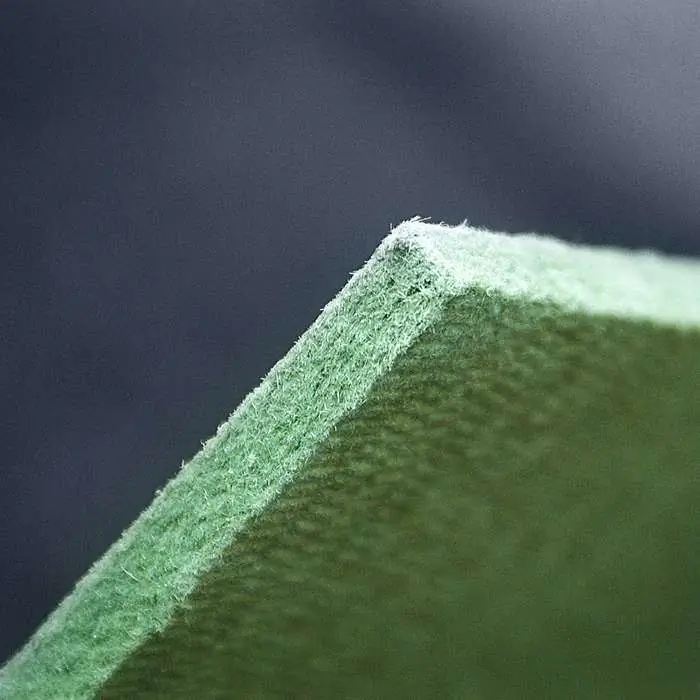
But not without flaws. Due to their "breathing" abilities, the needles perfectly pass moisture, which contributes to the formation of fungus and mold. The conditions for their appearance are low temperature and humidity in the room. Therefore, such a substrate should be laid out exclusively on a dry base. In case of excess moisture, needles should not be used as a substrate, despite all its advantages.
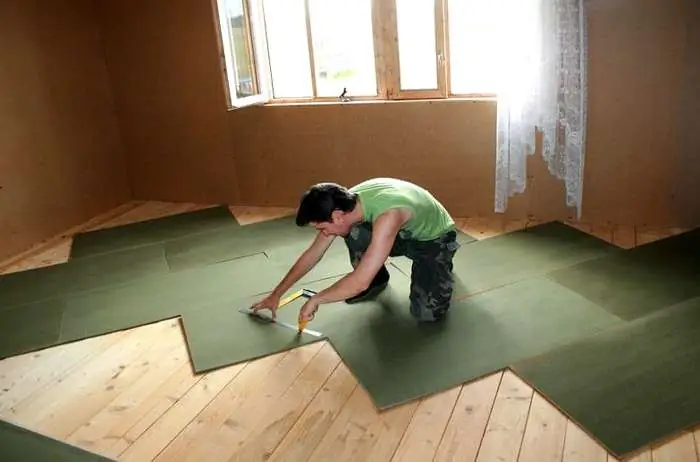
Foil backing
This substrate is covered with metal foil glued to one or both sides of the base. As the latter, polypropylene or expanded polystyrene can be used. All layers are glued together to perform different functions.
Mostly such a substrate is used for more reliable protection against moisture through the screed and to increase thermal insulation up to 30%. With a foil backing, there is no need to use wet room plastic sheeting. It will also be the best substrate for laminate flooring in places with a risk of fungus and mold. According to experts, the most suitable thickness for such a substrate would be 5 mm.
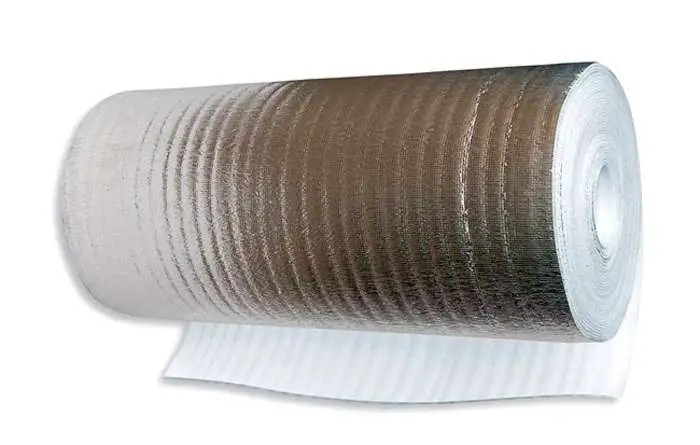
Plastic film
Despite the continuous development of laying technology, polyethylene film is still used as a substrate for laminate flooring. Naturally, it will be deprived of almost all the properties and advantages of modern substrates developed by technologists, but polyethylene is the most budgetary option for laying flooring. Of course, every installer mustunderstand that when using such a substrate in a couple of years, its minimum qualities will be lost, as well as the properties of the laminate itself. But if the goal is not to ensure a comfortable and long service life of the material, but to put the facility into operation, then this option is the most appropriate for the task.
When laying such a substrate, it is better to use a 0.2 mm thick film packed in rolls and lay out with an overlap of 20 cm.

Combined substrates
This type of laminate underlay combines polypropylene and expanded polystyrene. But when laying on a warm floor, you need to choose a substrate of small thickness, which will not only perform its main functions, but also let heat through.
There are cases of combining polyethylene foam with a polyethylene film to prevent mold in wet rooms.
In order to absorb the sound of footsteps, polyethylene foam pads with high noise reduction performance can be used.
Today, many well-known manufacturers offer their products with a ready-made substrate glued to the material. The quality of such a substrate usually reaches a high level and does not cause unnecessary trouble with laying. But the cost of such material is higher than usual.
So, in order to answer the question of which underlayment is better to purchase for a laminate, you need to know the characteristics of a particular room and the subfloor on which the laying will be done.






